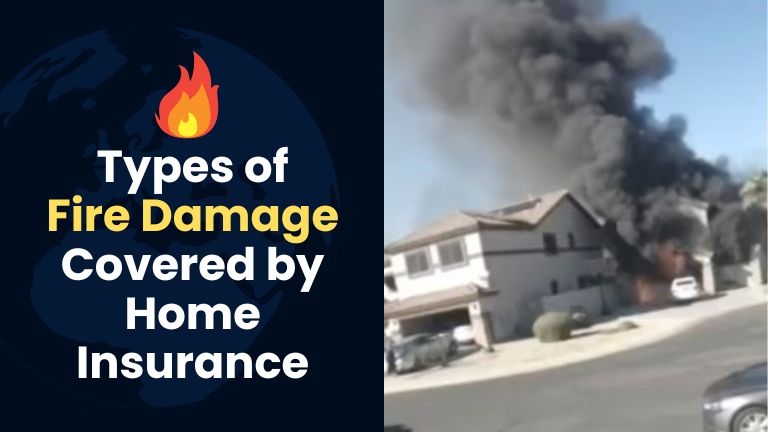
The threat of fire can strike at any time, and the thought of it is terrifying. First, this article will explain what types of fire damage a home insurance policy typically covers and what to look for. You should have clear information with you whenever you consider filing an insurance claim.
1. Direct Fire Damage
Direct fire can damage the walls, ceilings, floors, and structure of the home. Most home insurance policies cover direct fire damage. Your house and permanent building materials, such as bricks, cement, and roofing, are usually covered by the policy. This type of damage is the most obvious and serious. You will find it in the first and most essential coverage.
2. Smoke and Soot Damage
Even after the fire is extinguished, smoke and soot can remain on clothing, furniture, and walls. The odor and emetic stains on clothing are often difficult to clean. The good news is that many policies also cover smoke and ink damage. You can claim for proper cleaning and repairs.
3. Water Damage from Firefighting
The use of water to extinguish a fire is often essential. Water can cause additional damage to floors, electronics, and walls. Many insurance policies also cover damage caused by firefighting. You may sometimes find that water damage is considered part of the fire itself.
4. Explosion and Rapid Spread
A fire can explode due to a gas leak, a cylinder explosion, or a chemical reaction. In such incidents, both the structure and contents of the home are severely affected. Most home insurance policies also cover explosion damage. You will feel relieved if this coverage is included in the policy.
5. Electrical Fire Damage
Fires can occur in a home due to short circuits or electrical overloads. Appliances, wiring, and electronics can be particularly vulnerable. Most policies cover losses from such incidents, but coverage may sometimes be limited if the electrical system is not properly maintained. Read the policy terms carefully before filing your claim.
6. Contents and Personal Property Damage
Clothing, furniture, household appliances, and valuables can be burned or damaged by smoke in a fire. Home insurance policies typically have separate coverage for these items. Sometimes there are sublimits for items stored in separate storage or cabinets. Keeping a list and proof of purchase can simplify the claims process.
7. Temporary Housing and Additional Expenses
After a fire, when your home becomes temporarily uninhabitable, you may have to bear the cost of a hotel or rental accommodation. Most policies cover these additional expenses so you and your family can stay in a safe place. This provides emotional relief as well as financial security.
8. Liability for Damage to Others
If a fire spreads from your property and damages a neighbor’s home or property, your insurance policy can protect you from liability claims. Legal expenses and compensation may be covered under this coverage. You should never be uncertain and should understand the liability portion of the policy.
9. Debris Removal and Repair Costs
Removing debris and repairing damaged areas after a fire can be a significant expense. Many insurance policies also cover debris removal and basic repair costs. You will feel comfortable knowing that assistance can be provided for the cost of a complete home rebuild.
10. Code Upgrade Costs Required in Reconstruction
Older homes may need to be renovated to meet local building regulations during their next renovation. Some policies provide limited coverage for code upgrade costs. This coverage is helpful when new regulations add additional expenses.
Closure and Your Next Steps
Finally, every insurance policy is different, and the limits of covered losses may vary. Please read your policy terms carefully. Keep lists and receipts safe. A little anxiety is natural, but prudence and proper preparation provide better protection. If disputes arise over coverage or if you need help filing a complex claim, consider consulting an Eaton fire lawyer who can advise you on legal rights and next steps.


